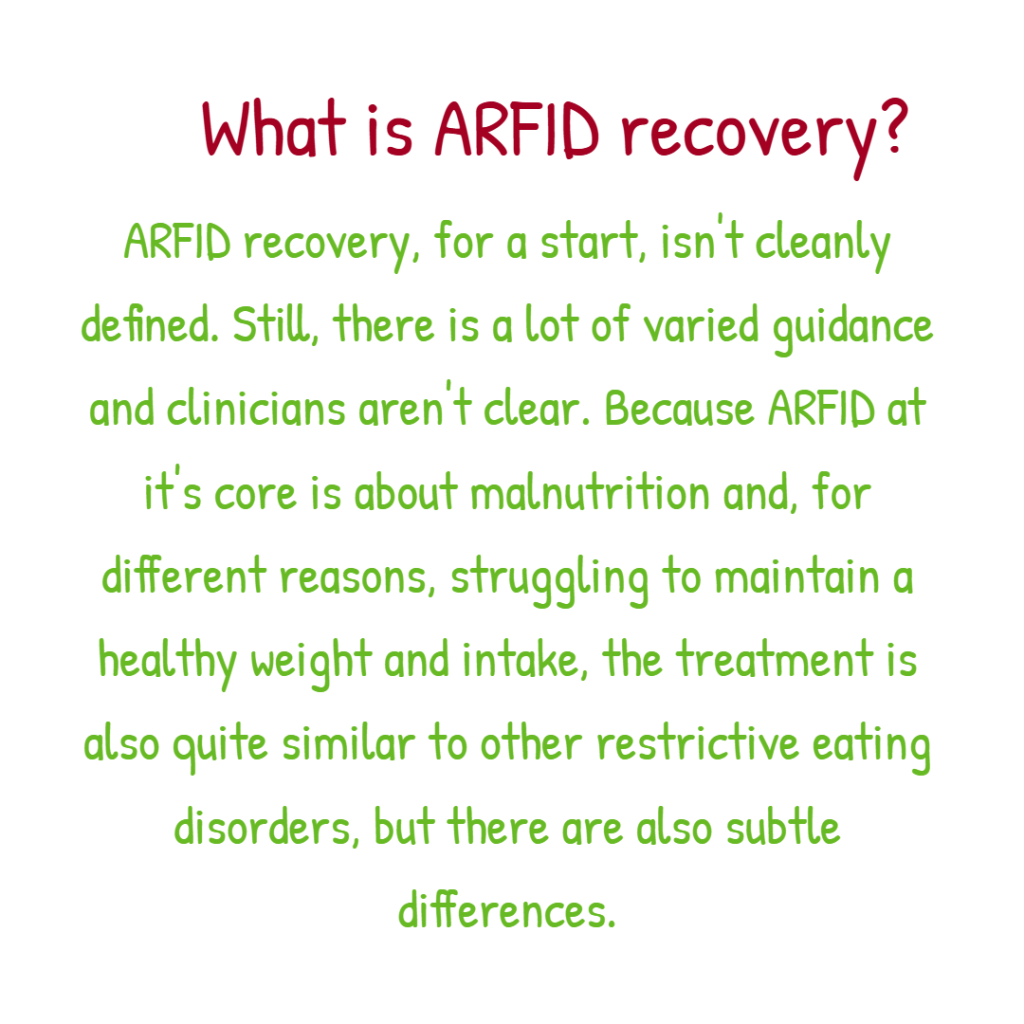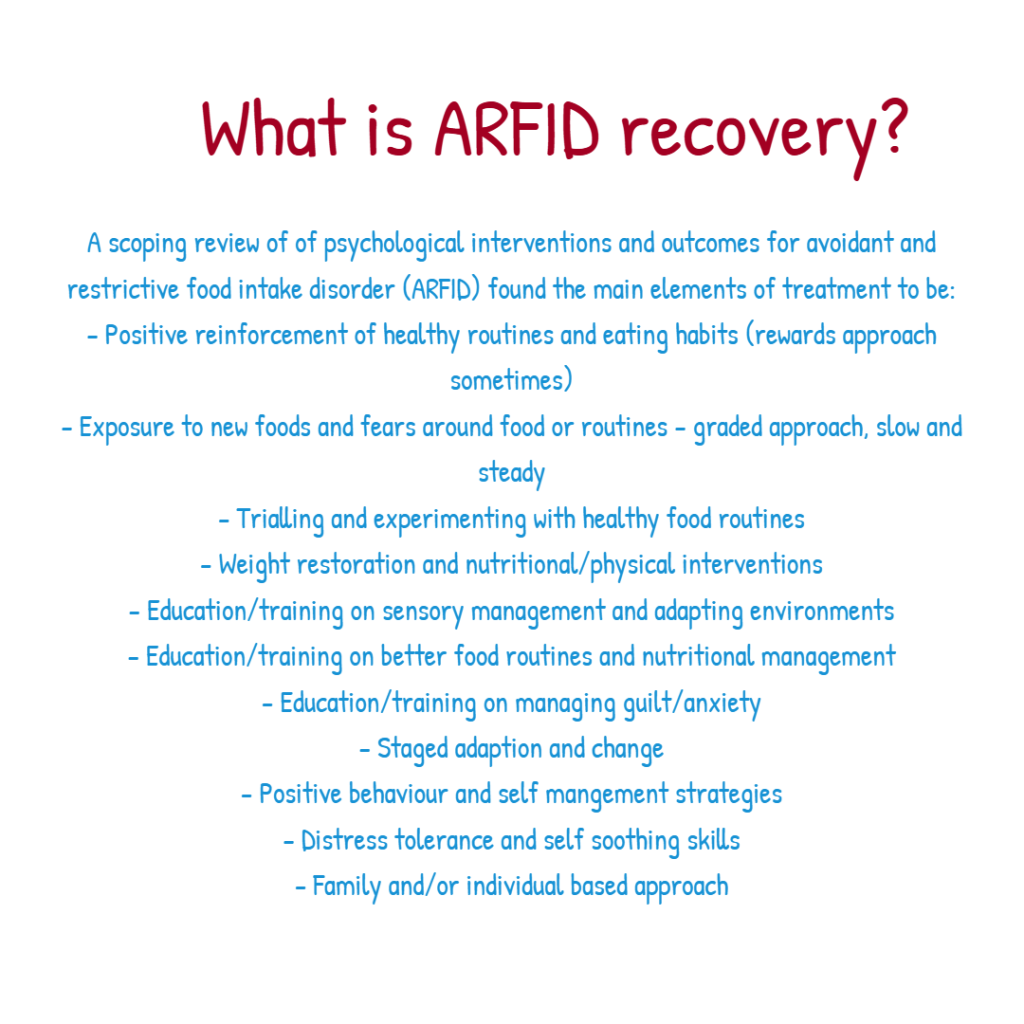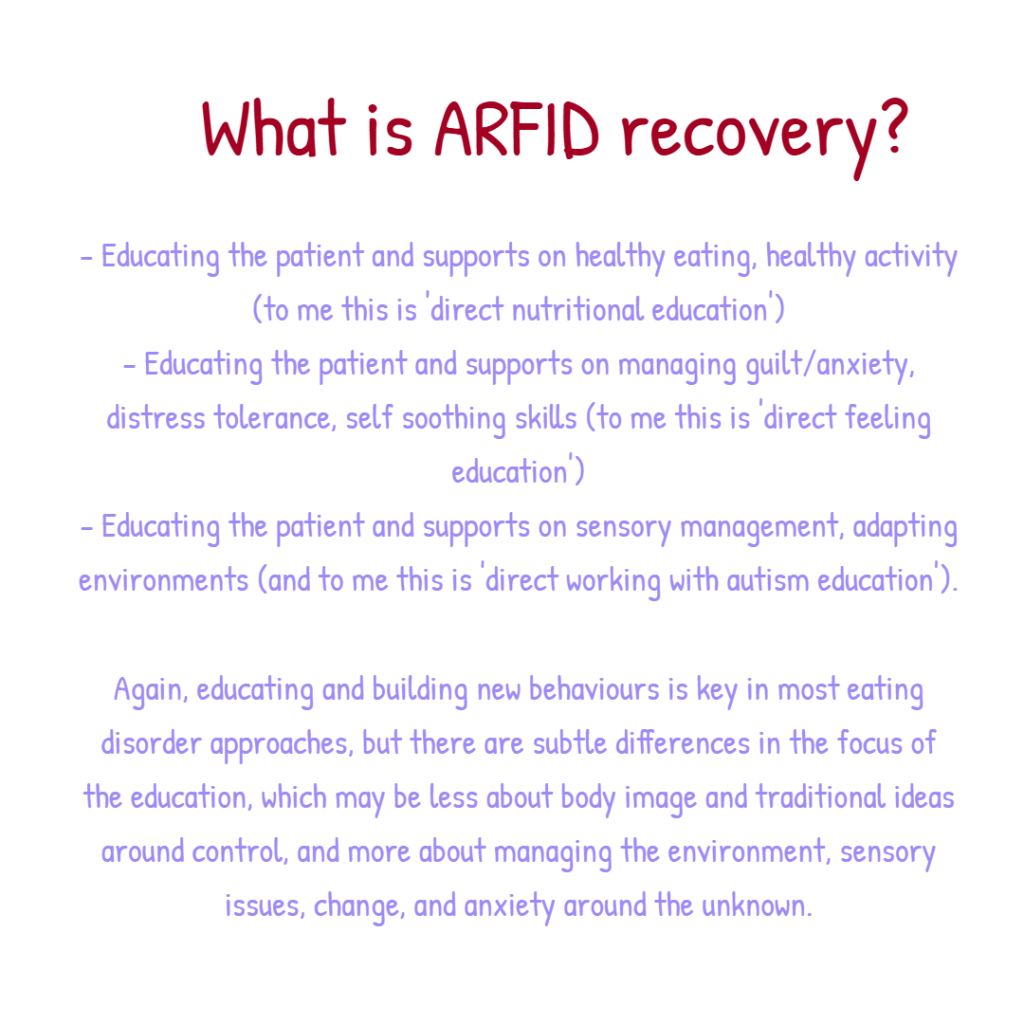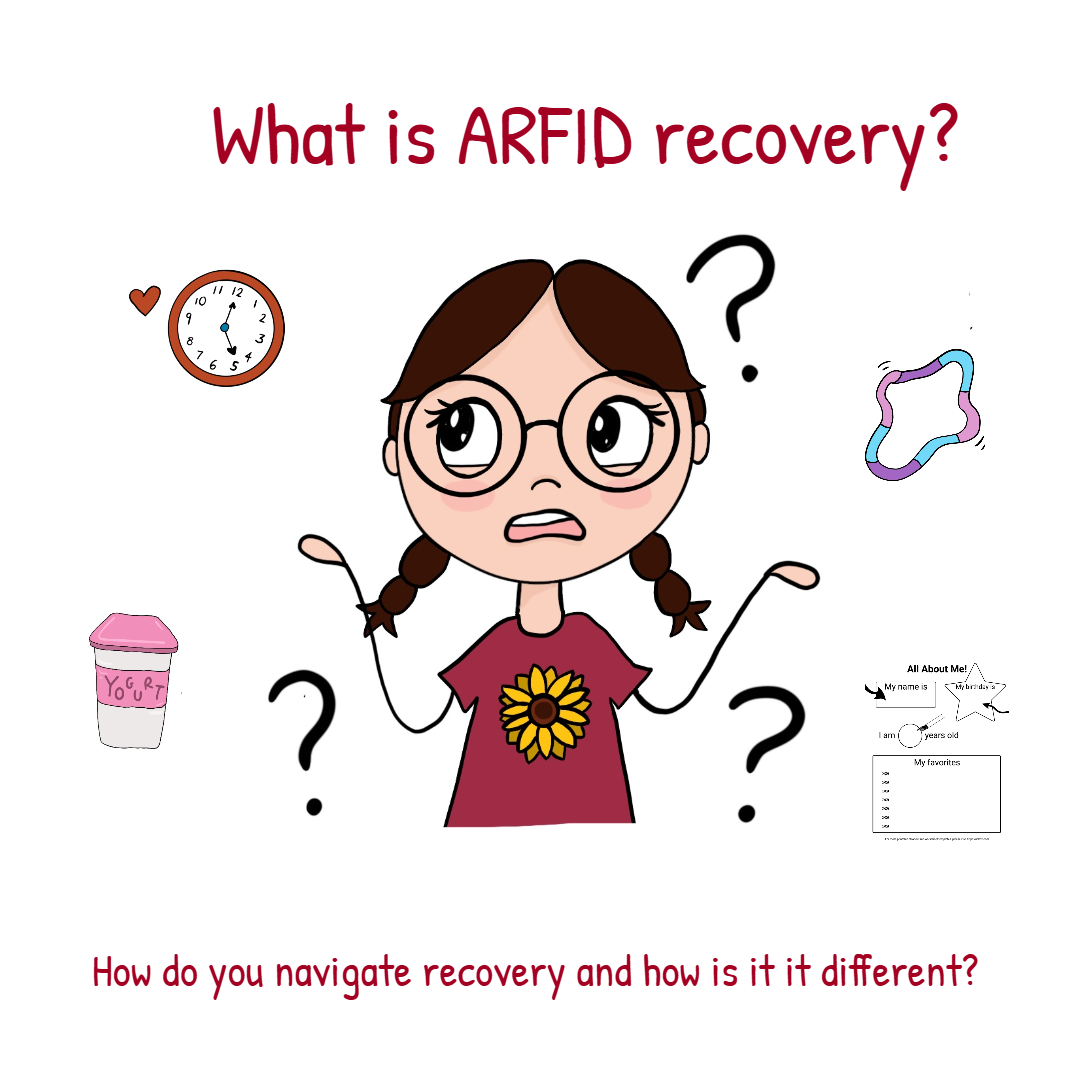I have been struggling a lot since discharge from hospital, and I guess I wanted to talk a bit more about ARFID recovery and thinking about what that means. I know a lot of my content at the moment has an eating disorder focus, and that won’t always be the case, but for now, managing my eating disorder is my priority, and so it’s something I feel like writing about a lot!
ARFID recovery, for a start, isn’t cleanly defined. Still, there is a lot of varied guidance and clinicians aren’t clear. Because ARFID at it’s core is about malnutrition and, for different reasons, struggling to maintain a healthy weight and intake, the treatment is also quite similar to other restrictive eating disorders, but there are also subtle differences.Today I want to summarise some of the research and explain, for those attempting to recover, what recovery/treatment is to me, and share some helpful resources.
A scoping review of of psychological interventions and outcomes for avoidant and restrictive food intake disorder (ARFID) found the main elements of treatment to be:
- Positive reinforcement of healthy routines and eating habits (rewards approach sometimes)
- Exposure to new foods and fears around food or routines – graded approach, slow and steady
- Trialling and experimenting with healthy food routines
- Weight restoration and nutritional/physical interventions
- Education/training on sensory management and adapting environments
- Education/training on better food routines and nutritional management
- Education/training on managing guilt/anxiety
- Staged adaption and change
- Positive behaviour and self mangement strategies
- Distress tolerance and self soothing skills
- Family and/or individual based approach
So these are all things that may form part of ARFID recovery.
Some of the main things treatment had in common that are key are:
- Weight restoration, potentially to involve meal plans, gradually increasing nutritional intake, reducing or completely prevention of unhelpful/maldaptive behaviours such as compulsive exercise
- Graded exposure to new foods and the slow building of healthy, positive food and activity routines
- Positive reinforcement and trialling
For the above, these are very similar to tradtional eating disorder approaches, but key differences are taking it slow and graded – appreciating how difficult change is – and it being highly personalised and working with individual routines. - Educating the patient and supports on healthy eating, healthy activity (to me this is ‘direct nutritional education’)
- Educating the patient and supports on managing guilt/anxiety, distress tolerance, self soothing skills (to me this is ‘direct feeling education’)
- Educating the patient and supports on sensory management, adapting environments (and to me this is ‘direct working with autism education’).
Again, educating and building new behaviours is key in most eating disorder approaches, but there are subtle differences in the focus of the education, which may be less about body image and traditional ideas around control, and more about managing the environment, sensory issues, change, and anxiety around the unknown.
Overall…the big differences seem to be about managing CHANGE and being PERSONALISED and managing the AUTISM/ANXIETY AROUND IT ALL, while still managing risk (i.e. increased calories, no exercise), learning about healthy habits, and incorporating these habits.
Other studies have also highlighted accessibility differences, like involving the family, involving special interests, working on identity, art therapy, greater use of worksheets, and environmental adjustments for sessions.
(Research/study/scoping review link) https://onlinelibrary.wiley.com/doi/full/10.1002/eat.24073 and https://www.oslo-universitetssykehus.no/4a9393/contentassets/eff5346b78e14cc48a6b46781477134d/dokumenter/towards-an-evidence-based-out-patient-care-pathway—arfid.pdf
https://pmc.ncbi.nlm.nih.gov/articles/PMC9100178/#sec5-nutrients-14-01739
Right click to open images in new tab.






Leave a Reply